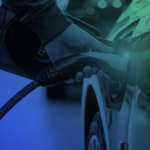The Car Dealership Business Model: Then Versus Now
Car dealerships have changed immensely over the years. A look back at when the first car sale was recorded in the 1880s highlights just how far the car dealership business model has come.
Car dealerships have changed immensely over the years. A look back at when the first car sale was recorded in the 1880s highlights just how far the car dealership business model has come.
Before there were car dealerships, auto manufacturing factories sold cars directly to consumers. But this system was far from perfect, with buyers having to live near a factory to purchase a vehicle or organize the delivery of a vehicle (which in the late 19th century would have been both difficult and expensive). However, it wasn’t long before the first car dealership was established, the Reading Automobile Company in 1889. A man by the name of Fred Koller opened the first dealership in the United States. His Reading, Pennsylvania dealership sold cars manufactured in Cleveland. The Reading Automobile Company is widely considered to be the first auto dealership dedicated exclusively to selling vehicles (other dealerships had existed before it, but they had been established to sell horse-drawn carriages).
There’s no denying the automotive industry has come a long way since the turn of the century. Nowadays, dealerships sell cars from automakers all over the world. The dealership business model has changed many times over the last century. However, there have been few changes more transformative than the rise of technology in the 21st century. Below, we examine the car dealership business model of today, including what it looks like now and what the future holds for auto dealerships around the world.
What is the car dealership business model now?
The car dealership business model is one of a transactional nature. This hasn’t changed since Koller opened the first car dealership back in 1889. The main purpose of dealerships is to sell cars to consumers. Although the basic function of the car dealership business model is the same, the way in which cars are sold has changed dramatically due to the technological advances of the last ten years. In fact, even ten years ago, many people were still starting and ending the car buying process in a physical dealership. But ever since the COVID-19 pandemic, car dealership sales have shifted and are now more digital than ever before. Studies have indicated that many consumers consult the internet before buying a car, with a rising percentage completing the entire transaction online.
Realizing that the future of the automotive industry lies in online retail, dealerships have started adapting to this new environment. That’s where digital automotive retailing comes in. Platforms like taq’s one Platform have allowed dealerships to leverage technology and seamlessly integrate their websites with their physical locations. When digital automotive retailing is embraced, dealerships can meet their consumers’ expectations for online purchasing, allowing customers to initiate and even finalize their vehicle purchases online. Dealerships are quickly realizing that if they want to survive well into the 21st century, they need to say goodbye to the traditional car sales business model and keep pace with ever-evolving purchasing patterns. The automotive industry is going digital, and there’s no stopping it. Dealerships must keep up, or they risk losing business.
Will there no longer be auto dealerships? Do auto dealers still have a future?
We don’t predict that auto dealerships are going anywhere anytime soon. There will always be a need for the human element in the car buying process. However, car dealerships of the present and future are going to look a little different than we’re used to. Embracing digital automotive retailing is going to be crucial if dealerships want to survive in the long term. Why? Digital automotive retailing provides solutions for the many problems that the traditional car dealership business model faces. For example, price haggling and the inconvenience of shopping for a car or applying for financing in person are just a few elements of the car buying experience that modern consumers want to do away with. Many experts agree that modern consumers are more open to new business models, are comfortable initiating the buying process and applying for financing online, and want more price transparency and less haggling. Therefore, the new car dealership business model must strive to meet these expectations, and digital automotive retailing platforms can help facilitate this.
However, to effectively implement digital automotive retailing, modern car dealerships will need to rethink their organizational structures, as well as invest in new technology and training for staff. The reality is that the traditional car dealership business model is expensive. From the dealership’s physical property to the sales personnel to administration, accounts, and marketing, managing even the smallest dealership comes with a lot of overhead. Embracing auto retailing, especially automated features, can alleviate some of the stress (and money) that comes with running a dealership.
Beyond the old model putting a lot of pressure on dealerships to make a sale, that way of doing business is no longer what the customer wants. Consumers across all industries have learned to transact in a different way. Now, they want to make a purchase on their own time, from the comfort of their own home, after having done ample research. They don’t want to feel rushed or pressured, and they certainly don’t want the stress of haggling for a better price. Luckily, digital automotive retailing gives consumers the opportunity to shop however they want. A customer can initiate the car buying process online, browsing options, viewing transparent pricing, or even scheduling a video call with someone in the showroom. They can do all of this before deciding to visit the dealership to test drive the vehicle in person (however, they can schedule this test drive on the website). A customer can also start and complete the shopping experience entirely online, opting to have their new car delivered directly to their door. Alternatively, they can forgo the online experience altogether and initiate the process by visiting your dealership. Ultimately, consumers want choice, and when dealerships adopt a new business model rooted in digital retailing, they provide their customers with just that.
What is the outlook for auto dealers?
The times are changing for auto dealerships. While we don’t predict they’re going anywhere just yet, we do have a few predictions as to what auto dealerships of the future will look like. From dealership consolidation to greater customization and adoption of the agency model, this is what we predict the outlook for auto dealers to be:
Dealership Consolidation
Dealership consolidation is one outlook we’re already seeing within the industry. Auto dealerships, many of which have enjoyed increased profits and greater operational efficiency thanks to auto retailing in the last few years, are now looking for expansion opportunities. They are finding them in small, private dealerships. The result? Larger dealerships are buying out these small dealerships, leading to a consolidation of the market. In buying out smaller dealerships, they gain better access to more capital, improved technology and human resources, and a whole new customer base. Given these benefits, we predict that dealership consolidation in North America will only continue in the years to come.
Direct-to-Consumer Vehicle Sales
We think the outlook for auto dealers also involves a little competition, specifically with direct-to-consumer vehicle sales. Direct-to-consumer vehicle sales, made popular by Tesla in the modern era, are on the rise. To this day, Tesla continues to sell their cars directly to consumers without the use of dealerships. Since then, other brands like Lucid and Rivian have followed suit. While auto dealerships aren’t going anywhere, they will undoubtedly need to adapt to compete with direct-to-consumer vehicle sales. One reason that consumers like this type of direct sale is due to its efficiency. Therefore, to compete, dealerships will need to boost their efficiency, transparency, and convenience. Luckily, implementing a digital automotive retailing platform can help them do just that.
Fewer Vehicles in Dealerships
Another prediction for auto dealerships of the future is that they will house fewer cars than we’re used to today. Not only is storing and maintaining a large fleet of vehicles expensive but the rise of virtual reality and augmented reality technology has made it possible for consumers to “test drive” a car without ever visiting the showroom. While virtual reality will likely never completely replace the in-person car buying experience, the technology does offer an impressive and thorough look into a vehicle. Virtual reality makes it possible for a consumer to gain a realistic understanding of what it would feel like to be behind the wheel of a certain car. It also allows drivers to customize the vehicle to their preferences. For example, if they want to see the car in a different colour or with a different feature, they can do so almost instantly. No physical dealership can keep up with this, even one with a high inventory. Virtual reality, on the other hand, gives consumers a close look at the exact vehicle they wish to purchase. These technological advancements, especially as they are integrated on dealerships’ websites, will likely mean fewer cars in the lot of future dealerships.
Customized Packages
We predict the products and services offered by auto dealerships might change in the near future. Specifically, we predict that they will begin offering customized packages or add-ons to car purchases, ones that meet the demands of the modern consumer. What do we mean by this, you may be wondering? Consumers nowadays have a need for multiple types of vehicles. For example, in addition to their everyday cars, they might want an SUV to go on ski trips over the winter or a convertible to cruise down the high in the summer. But of course, no consumer wants to have five cars in their driveway for every need, nor do they want to have to rent a car every time they wish they had a different vehicle. That’s where customized packages come in. We predict that dealerships will start offering packages that give consumers access to another or multiple other vehicles for set periods of the year (whether it be weekends, seasons, or a certain month). In turn, this would allow the consumer to have the best of both worlds – an everyday car that meets their basic needs, as well as a specialty vehicle that suits their seasonal or weekend needs.
Test Drives and End Buying Experience
Our second to last prediction for auto dealers? Dealerships will become places for test drives and the end buying experience (i.e., where buyers complete their purchases after starting the process online). Again, we think dealerships will continue to be a key part of the car buying process in the future. However, rather than consumers visiting them to initiate the buying process, they will be places for the end buying experience (taking the car out for a test drive and picking up your newly purchased vehicle). Thankfully, due to digital automotive retailing technology, the end buying experience can be easily facilitated in a dealership, even if the beginning and middle of the process were both conducted online. This is because, with an omni-channel solution, your website and physical location are connected. When a customer starts shopping on your website, you can quickly pull up their information when they visit in person. Auto retailing allows you to see a given customer’s entire journey up to that point, including what vehicles they were looking at and any financing applications filled out.
Agency Model
One final prediction for auto dealerships of the future is a switch to an agency model. An agency model speaks to the growing consumer demand for a haggle-free car buying experience. By adopting an agency model, there will no longer be a built-in margin for each car. The traditional auto dealership buying model is as follows: dealerships purchase inventory at well below market value to create a margin. A portion of this margin is haggled away in order for the dealership to make a sale. But in changing to an agency model, there would be a set fee paid for each car sold, eliminating the need to haggle. The auto manufacturer would control the pricing, and the dealership would make a set profit for each sale. Therefore, there would be no need to negotiate the price. In essence, the price would be the price, minimizing pressure on both dealers and consumers. It also increases transparency, which is a major plus for consumers. The good news is that the agency model has already seen success in countries like New Zealand and South Africa, where trials by BMW and Mercedes Benz have already been conducted.
Although it may take some time for dealerships around the world to adopt agency models, there is something auto dealers can do to improve transparency in the meantime: embrace digital automotive retail. The more of your business that is conducted online, the greater opportunities you have for transparency. By posting reviews online, promoting an upcoming model, or conveyancing to customers that you can help them with whatever they need, dealerships can increase brand trust and loyalty.
How can modern car dealerships meet customer demands?
Now that you know a little bit more about what the future holds for automotive dealerships, you might be wondering what modern car dealerships can do to meet customer demands right now. Below, we’ve put together a list of ways that auto dealers can meet and exceed customer expectations in 2022.
- Boost transparency: Through your website, offer greater transparency by providing customers with as much information as possible (so much so that they don’t feel the need to call your dealership). While some customers might still prefer to speak with a representative in person, giving them the option of initiating and completing the buying process online will foster customer loyalty and vastly improve the buying experience. This means having all kinds of website features and capabilities, including allowing customers to schedule a test drive, compare and apply for financing, get real-time insight into your available inventory, and start a text, email, or video chat with a showroom representative.
- Eliminate paperwork: One of the most tedious parts of buying a vehicle is filling out all the necessary paperwork (especially financing paperwork). Therefore, one way to engage customers in the 21st century is to streamline this process and cut down on the amount of time it takes to sign this paperwork. Allowing customers to compare financing options and apply for financing on your website at their leisure is a major step in the right direction.
- Seamless integration between your digital and physical dealerships: Auto dealerships must build websites that are fully integrated with the in-person buying experience. The goal is not for your website to replace your physical dealership or vice versa. Rather, they should complement one another. For example, your website should provide plenty of options to the customer, either to continue the buying process in person or by speaking to a representative or to continue it online without additional help.




